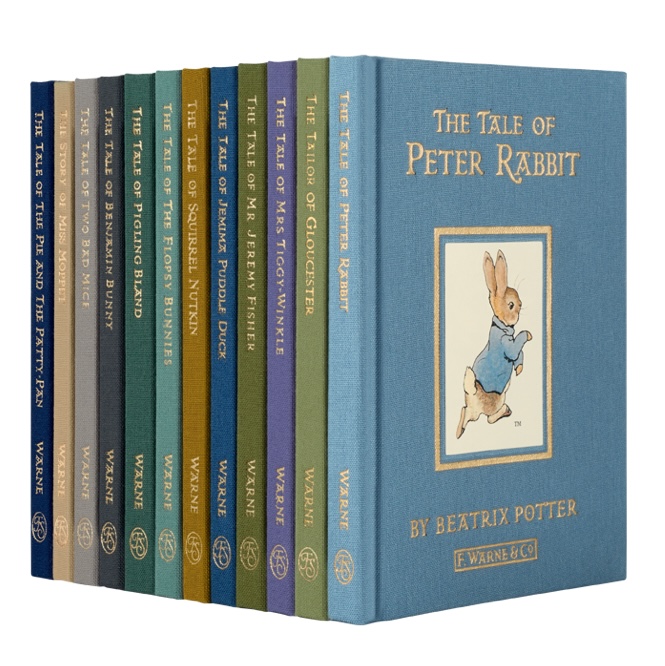Beatrix Potter: A 19th Century Entrepreneur

Beatrix Potter was a woman who was way ahead of her time. A savvy businesswoman, a writer, an illustrator, a conservationist, a farmer and the original merchandiser. She built a retail empire that is worth $500 million today (Smithsonian magazine).
Born into a wealthy upper-middle-class family on 28th July 1866, Beatrix was raised amongst high society during the Victorian era in Kensington, London. She had a lonely childhood with just a few friends and a governess for company, alongside her brother Walter and the rabbits and mice that she kept as treasured pets. She spent lots of time on her own connecting with animals and immersing herself into her sketches of the natural world.
According to the Royal Parks, it’s quite possible that Beatrix spent time in West Brompton Cemetery observing the animals and using them as inspiration for her drawings and stories. As a regular visitor to West Brompton Cemetery myself, I understand fully her fascination. It is a treasure trove of wildlife: squirrels, foxes and ravens are amongst its residents whom I’ve been fortunate enough to see. I can easily envision her wandering the leafy pathways through the cemetery finding inspiration from the animals.
Beatrix understood very well that she had to make her own money if she wanted to become an independent woman. She was indeed a strong character who was determined to make her mark on the literary world. The Tale of Peter Rabbit was initially rejected by six publishers, so Beatrix decided to publish the book herself. It was a huge success. She decided to ask the publishers Frederick Warne & Co to reconsider their rejection. Seeing the books growing popularity, they agreed. The official Tale of Peter Rabbit came out in 1902 and by Christmas, 20,000 copies had been sold (The Telegraph).
There is much to be said of Beatrix’s intuitive nature and business mindset, especially for a woman living in the late 1800’s during a very restrictive Victorian era. Her parents were infuriated that she was pursuing a career as a writer rather than focusing on finding a potential suitor. This was the Victorians after all, and upper middle-class women were not supposed to work. What further added fuel to the fire was the fact that the youngest brother of Frederick Warne & Co publishing, Norman Warne, proposed to Beatrix and she accepted. Her parents were horrified that their daughter was engaged to a tradesman and insisted the news was kept quiet by only telling close family members.
Beatrix’s mother Helen was the daughter of a wealthy cotton merchant, and very much wanted Beatrix to marry into a family of high status rather than work, which caused tensions between them. Can you imagine if Beatrix Potter had listened to her mother’s advice? There’d be no Peter Rabbit, no Tom Kitten and no Jemina Puddle-Duck! No childhood adventures with these beautiful characters. Which just goes to show, mother doesn’t always know best. Unfortunately, Norman passed away from leukaemia before he and Beatrix were to marry. Beatrix was heartbroken.
A few months after Norman’s passing, Beatrix moved from London to Hill Top Farm in the Lake District, where she had spent many childhood summer holidays and which she purchased from the proceeds of her books. This move was very symbolic for Beatrix. It signified independence away from her family’s home in London and was to become the inspiration for many more of her books including ‘The Tale of Mr Jermey Fisher’ and ‘The Tale of Samuel Whiskers.’ There she would marry local solicitor, William Heelis. Perhaps a relationship that was based more on practicality than love, they were connected through their interest in nature. Beatrix’s heart however, remained with Norman throughout the rest of her life.
At Hill Top Farm she bred prize winning sheep and became quite the conservationist. She cared deeply about the environment and helped to preserve the English countryside by buying land and farms to protect them from developers. When Beatrix passed away in 1943, she left 4,000 acres of land and 14 farms to the National Trust.
Beatrix Potter really was the original merchandiser, understanding fully the power of creating a brand. Most famously, Peter Rabbit who has stood the test of time when it comes to branding. His little blue jacket and brass buttons have been adored by the world over. Beatrix licensed the Peter Rabbit name and image to companies that also made dolls and board games. Quite remarkable given that the only expectation for her would have been to walk down the aisle and say, ‘I do.’
In total, Beatrix published 28 children’s books. Her artwork is still cherished today as much as it was over a hundred years ago: toys, clothing, crockery, furnishings, ornaments and stuffed animals continue to fly off the shelves. Regardless of age, Peter Rabbit resonates with us all. For myself, he is a reminder of my childhood, of my adventures on the farm making mud pies in my dungarees and wellington boots, talking to the animals. I have no doubt that Beatrix Potter’s stories are truly timeless and will continue to inspire many future generations of children.
